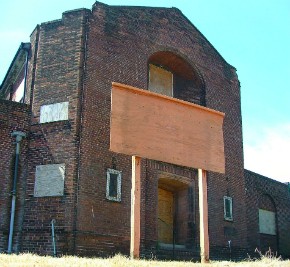Holy stuff: Whats left when a church closes
The day I visited Lucille to hear the story of how her church had closed, she started talking before I could even turn on my voice recorder. “We don’t know what all happened at the end,” she said. “We were never told where the stuff in the church went to—the pews and cross and things. Maybe they’re still in the building!” The not knowing had kept Lucille in a state of suspended grief—something like the way parents feel when they cannot locate the bodies of dead children. She refused to drive the main street through her hometown, where the church now stands empty. “I can’t go back there,” she said.
Some churches meet in coffee shops; some make use of a “church in a box” kit they set up in school auditoriums. In most settings, however, people of faith still cling fondly, even fiercely, to the dedicated physical space that links them to their faith tradition. A church building—with its windows depicting biblical scenes, its 1950s Sunday school posters, and even the silver set once used for the women’s guild tea—may prompt visceral responses in the hearts of the faithful.
“The church is not a building,” says the old Avery and Marsh song. “The church is a people.” But that’s the church universal; the church institutional is another matter. It is, in fact, a building—with walls, a basement, and the accoutrements accumulated over decades of rummage sales and Christmas pageants. As much as we imagine the church as a dream in the mind of God, that dream has been made manifest in our world with cement blocks painted aquamarine and a layer of asbestos in the floor.





